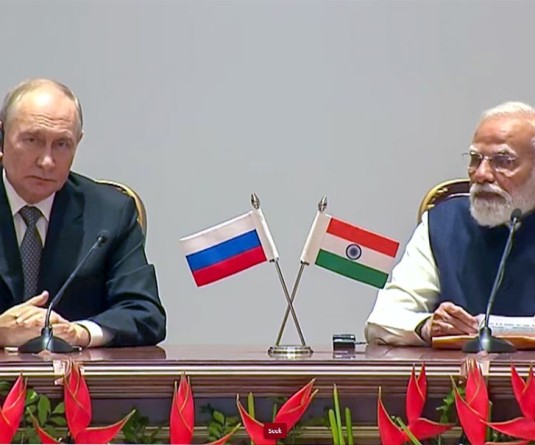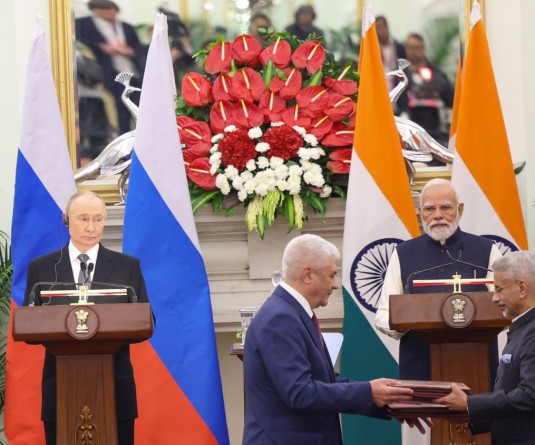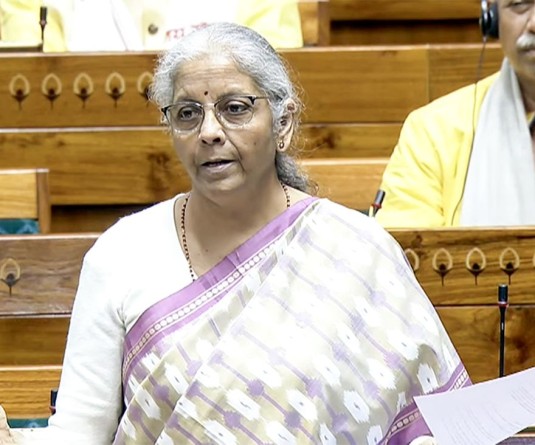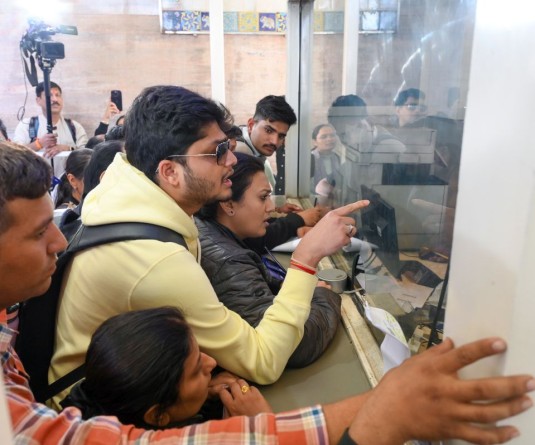
New Delhi, February 9 (Agencies): Some 2.7 million officials fanned out across the country Wednesday to begin the mammoth exercise of headcounting India’s estimated 120 crore (1.2 billion) people, with President Pratibha Patil being the first citizen to be enumerated here. The nationwide exercise, which will continue over the next three weeks, began as a group of officials, called enumerators, visited the president at the Rashtrapati Bhavan. Census enumerator Rita collected information on a number of characteristics about the president’s household.
Pratibha Patil signed off on a 29-point questionnaire listing income, religion, education, access to basic utilities and other topics. A similar form will be filled by every citizen of the country through Feb 28. Speaking after her enumeration, the president asked everyone to ‘wholeheartedly’ take part in the census, considering it ‘as a national duty’. A similar exercise would be carried out in more than 7,000 towns and 600,000 villages across the country. The first round of houselisting and collecting housing data for Census-2011 was completed from April to September last year. The houselisting is done because there is no complete address system in India and each and every structure is being listed so that when the enumerators come for headcounting, they know exactly where to go, officials said. In the second phase, enumerators will ask questions on literacy, work status, marital status, languages spoken, mode of transport and number of children.
On the last day of the survey, enumerators will count the homeless on the streets across India. And between March 1 and 5, they will compile the data for the entire population. The gigantic decadal exercise, which will be the 15th headcount of India’s population since 1872, is undertaken to create a database on demography, economic activity, literacy and education, housing and household amenities, urbanisation, fertility and mortality, Scheduled Castes and Scheduled Tribes, language, religion and migration. New features added to the 2011 census include revised questions on the institutional household, new category in gender parameter for transgenders, a code for separated and divorced, new codes under status of school attendance and a separate code included under non-economic activity. For the first time, officials are stepping beyond the demographics and economic activity and would collect details like ownership of mobile phones, computers, internet access, and availability of treated or untreated drinking water.
Pratibha Patil signed off on a 29-point questionnaire listing income, religion, education, access to basic utilities and other topics. A similar form will be filled by every citizen of the country through Feb 28. Speaking after her enumeration, the president asked everyone to ‘wholeheartedly’ take part in the census, considering it ‘as a national duty’. A similar exercise would be carried out in more than 7,000 towns and 600,000 villages across the country. The first round of houselisting and collecting housing data for Census-2011 was completed from April to September last year. The houselisting is done because there is no complete address system in India and each and every structure is being listed so that when the enumerators come for headcounting, they know exactly where to go, officials said. In the second phase, enumerators will ask questions on literacy, work status, marital status, languages spoken, mode of transport and number of children.
On the last day of the survey, enumerators will count the homeless on the streets across India. And between March 1 and 5, they will compile the data for the entire population. The gigantic decadal exercise, which will be the 15th headcount of India’s population since 1872, is undertaken to create a database on demography, economic activity, literacy and education, housing and household amenities, urbanisation, fertility and mortality, Scheduled Castes and Scheduled Tribes, language, religion and migration. New features added to the 2011 census include revised questions on the institutional household, new category in gender parameter for transgenders, a code for separated and divorced, new codes under status of school attendance and a separate code included under non-economic activity. For the first time, officials are stepping beyond the demographics and economic activity and would collect details like ownership of mobile phones, computers, internet access, and availability of treated or untreated drinking water.






